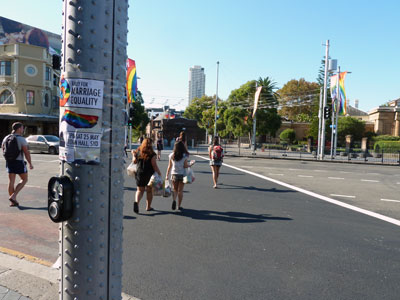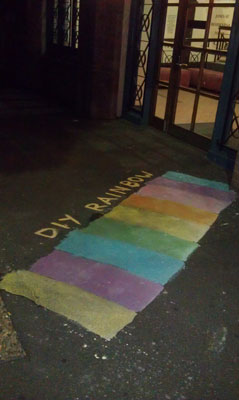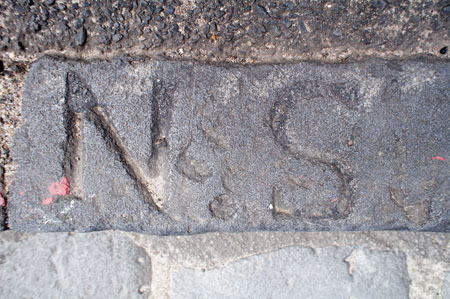The 1950-60s television courtroom drama, Perry Mason, is said to have been the first detective show to feature either a tape or a chalk outline to mark the spot where a murder victim’s body had been found. The body outline made its first appearance in the episode ‘The case of the perjured parrot’. The writer of the show, Erle Stanley Gardner, had actually used this idea much earlier in the book, ‘Double or quits, which he wrote in 1941 under the pen name A.A.Fair (see Perry Mason TV series).
Ever since then the body outline has not only been used regularly in murder stories and television shows, but it is very often adaptively reused in illustrations alluding to all sorts of crime and fatality. It is a symbol — based on a fiction — Â that is continually modified, re-invented and re-purposed. We recognise it in newspaper cartoons, TV commercials and political protests and we understand what is meant.
In New York I came across two instances of the symbolic body outline, both associated with the New York Public Library. The first was in an exhibition, Why we fight: remembering AIDS activism, which recently opened at  the New York Public Library on Fifth Avenue. One of the exhibits was this poster from the library’s archives. It was produced in 1988 by ACT UP (the AIDS Coalition to Unleash Power), a deliberately confrontational organisation that was formed to challenge government inaction over AIDS.
The other body outline was on one of the plaques along the section of 41st Street known as Library Way. These sidewalk plaques carry inspirational quotes about reading, writing, and literature. The one I photographed reads:
… a great book should leave you with many experiences, and slightly exhausted at the end. You live several lives while reading it. William Styron (1935 – Â ), Writers at Work.
To me, the embossed illustration on the plaque seems very odd. The reader of the book looks, not exhausted, but dead (presumably in a hiatus between two of those ‘several lives’).

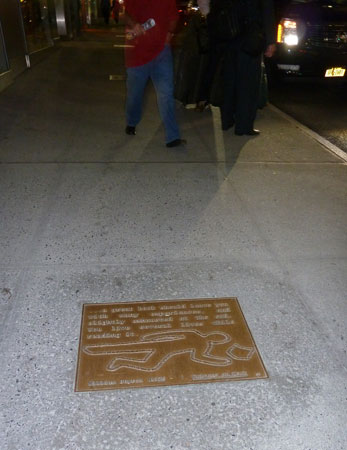
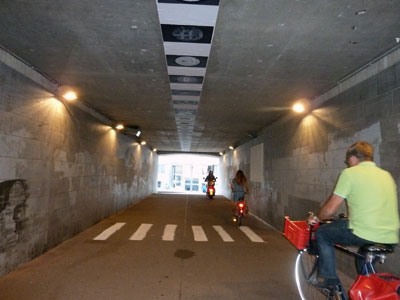

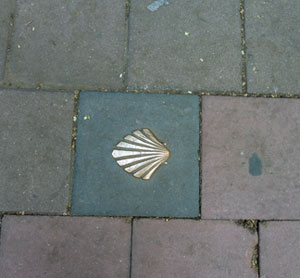

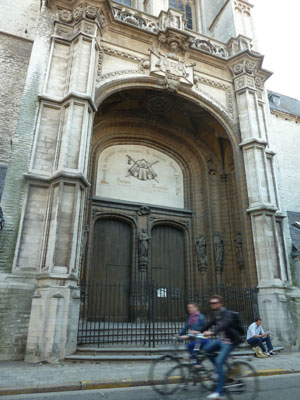
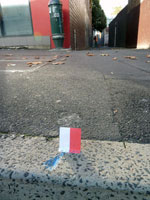
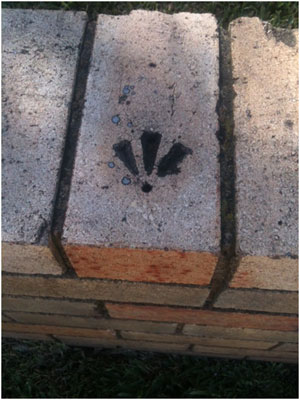

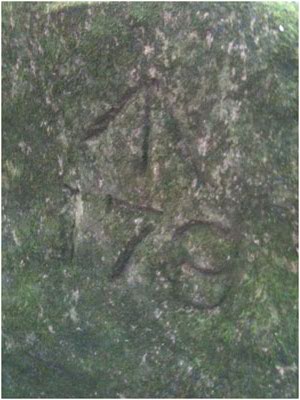
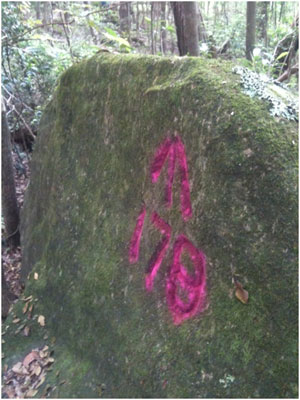
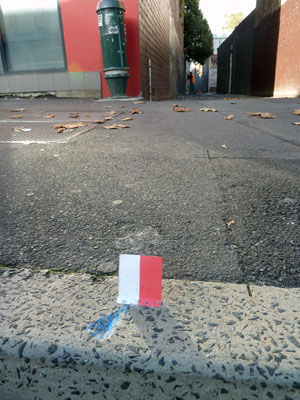


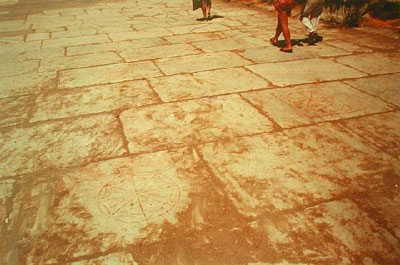
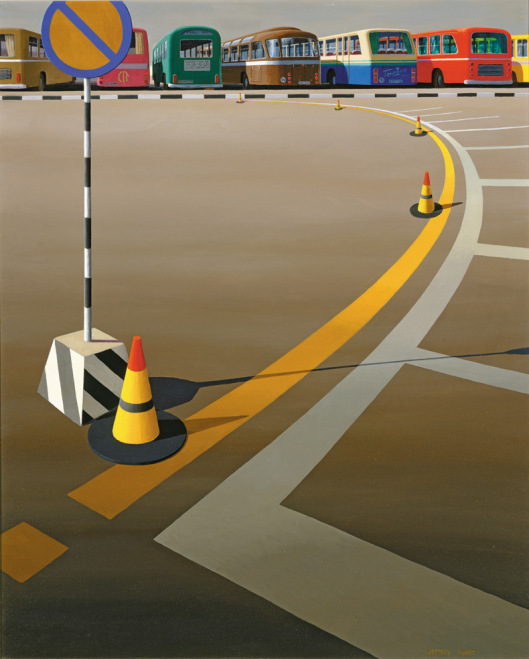
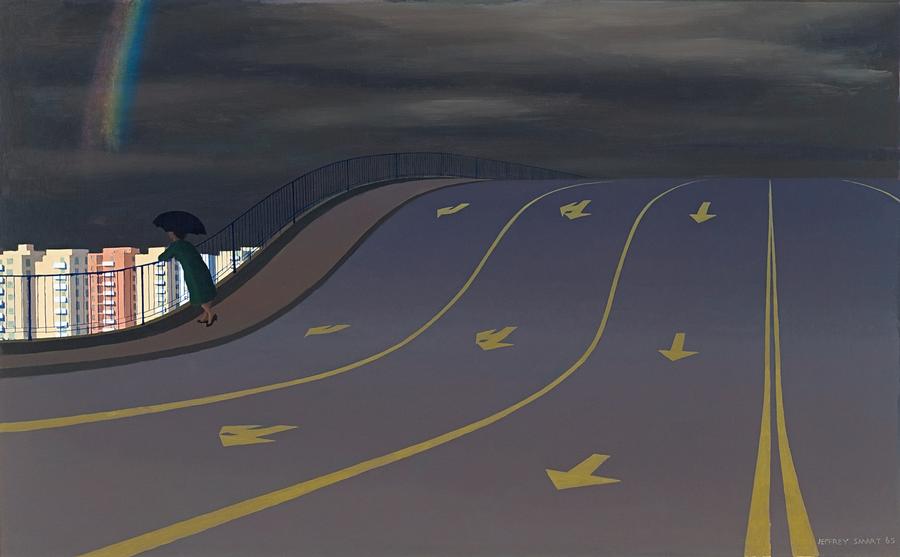

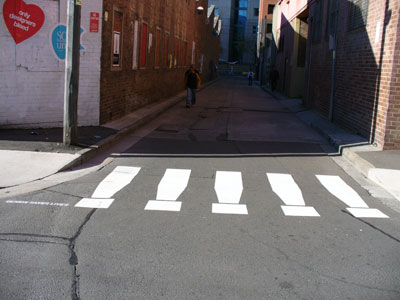
![Road safety poster using Ian Macmillan’s famous 1969 photograph, issued by the Kolkata [Calcutta] Traffic Police in February 2013.](http://www.meganix.net/pavement/wp-content/uploads/2013/04/BeatlesKolkata_65951375_9358d13f-8536-4294-98c6-2b358c560b1f.jpg)
